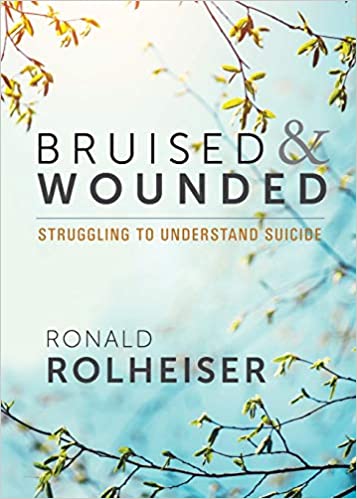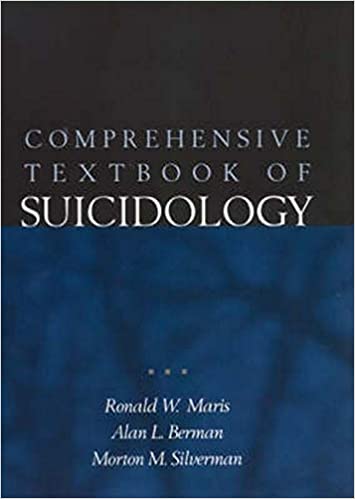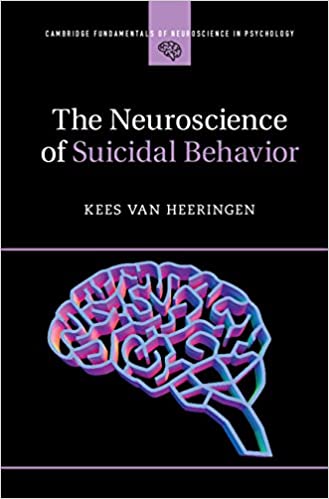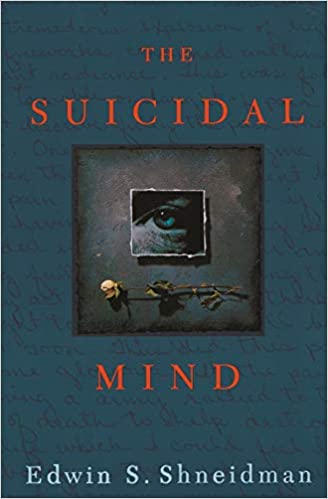Robert Bogue
November 29, 2021
No Comments
In principle, I must disagree with any book that calls itself comprehensive. It’s impossible to contain everything about a topic in one tome – in part because there’s always new discoveries, and in part because it’s hard to define the edges of a particular area of knowledge. Despite my semantic objections, Comprehensive Textbook of Suicidology does provide a rather impressive array of topics related to suicide.
It’s in the Water
Some cultures seem to repel suicide. Their suicide rates are impressively low, while other countries seem to attract suicide like a magnet. They seem to encourage suicide by their very being. What differentiates one culture from another and causes it to resist suicide isn’t really known. However, there are many factors related to what is – and is not – acceptable as well as degrees of connectedness and other factors. Trust: Human Nature and the Reconstitution of Social Order explains how, while trust is essential in our societies, where we place our trust – in family, company, society, country, etc. – can have a profound impact on the way that society functions and its efficiencies.
So, while little is known about why certain countries are resistant, we do know that some are – and we can look for clues to what might help other societies resist suicide better.
Risk and Protective Factors
Suicide is filled with conflict, the apathy between the desire to live and the desire to die. (See The Suicidal Mind.) Moreover, there are factors that increase someone’s risk of suicide and factors that seem to provide some degree of protection from suicide. This is one of the key challenges with creating an assessment for suicide risk. You can’t just tally up the risk factors and declare a person’s risk for suicide; you must also consider what factors they may have that form a protective bubble around them.
Only
The worst word in suicidology is the word “only.” It’s the worst word, because it’s the expression of the kind of cognitive constriction that leads to deciding suicide is a good option – or, rather, the only option. The tricky part is that if we want to reduce people attempting suicide, we’ve got to make sure that the word “only” isn’t the only word in their vocabulary.
I mentioned in my review of The Neuroscience of Suicidal Behavior that Phillip Tetlock’s work in Superforecasting may hold a key to teaching more people more cognitive diversity and provide some protection against suicide attempts.
Establishing Intention
One of the challenges as it comes to suicide is determining what was a suicide attempt and what was an accident. Consider an automobile accident where a car runs into a tree or a concrete barrier. Was it someone who had a stroke, fell asleep at the wheel, or decided to attempt suicide via an automobile accident? You might be inclined to consider whether there were tire marks indicating hard breaking – but if you did, you’d have to consider that many people change their mind at the last moment, as is evidenced by survivors who jumped off the Golden Gate Bridge (see The Suicidal Mind for more).
The problem for those who are successful at suicide is we’ll never know what really was going through their head. For those that were attempters the shame associated with both suicide and the failed attempt makes self-reports somewhat suspect.
No Switching
There’s a misconception – also covered in Myths about Suicide – that if you stop one suicide attempt, they’ll just find another way. However, the research says differently. If you’re able to remove the preferred method of attempting suicide, they’re unlikely to switch to another form. Certainly, you can’t prevent someone who is intent on committing suicide by removing the most preferable means, but it does have a profound impact.
So, if there’s an opportunity to prevent a suicide attempt or thwart it, we should.
Short Term Protection, Long Term Problem
Sometimes the things we do can provide short term protection but when overused create problems. This is the root of addiction. An addiction is just a coping strategy that begins to take control of you instead of you controlling it. (See The Globalization of Addiction and Dreamland for more.) Despite the risk of alcohol myopia, alcohol can be a short-term strategy for coping with intense stress. Since cognitive constriction is a problem, alcohol unnecessarily narrowing one’s field of view into a myopia is bad. (See The Suicidal Mind for more about alcohol myopia.)
The challenge is that, over time, the risk of a suicide attempt increases if alcohol is continued. Why isn’t precisely clear, but certainly those who could self-identify or be identified as an alcoholic are at substantially greater risk of suicide than those who use alcohol more sparingly.
Loneliness and Isolation
Much has been said about the protective benefits of being connected to other people. Connections with family, friends, clubs, churches, and community have a protective effect against suicidal attempts. The opposite of the spectrum is loneliness. To be clear, one can be alone and not feel loneliness. It’s the perception that there are no other people who care about our wellbeing that represents the risk. (See the book Loneliness for more.)
The greater degree to which someone is isolated, the more at risk they are for feelings of loneliness and therefore suicidal attempts. While we all have varying degrees of need to be socially connected, we all have a minimal need that, when not met, can create dysfunction and pain that drives people towards suicidal ideation. (See Who Am I? for more on motivating factors for people and the different needs for social contact.)
Failure to Fire
One of the challenges for suicide prevention is that, while suicide itself is rare, suicides which are the result of triggering events are even more rare. It’s not that you need to be particularly concerned with someone committing suicide immediately after the death of a loved one or someone with whom they were close. Statistically speaking, people rarely make an immediate or quick decision to “join” the person they lost.
Even other stressful life events rarely push people towards immediate action. It’s not until there’s an opportunity for the feelings of hopelessness to develop and settle in that people decide that they may want to take their own lives. (See The Hope Circuit and The Psychology of Hope for more on hope and hopelessness.)
History of Suicide
From the point of view of contemporary society, suicide has a stigma attached to it. The family of someone who has attempted or committed suicide is seen somehow to blame for the suicide attempt. It’s seen as a shameful act or a failing on the part of the family to provide the kind of stable environment that we all believe leads to well-adjusted people. However, as Judith Harris Rich explains in No Two Alike, there are some things in the environment that just cannot be controlled.
Throughout history, the role of suicide in society has changed rather substantially. In ancient times, controlling the time of one’s own death was a glorified way to die. If you couldn’t die in battle, then suicide was the next best thing. Suicide was also a practical matter. You were expected to commit suicide if you were a burden on society.
Historically, the prohibition against suicide was to prevent you from escaping prosecution for other crimes. It was an economic matter. If you committed suicide, particularly before being charged with another crime, the suicide claim would be made as well causing the seizure of your assets. So, the earliest perspectives on suicide were practical.
When Christianity began to become more popular, a problem arose. Christians promised a great afterlife. You could commit suicide and get there sooner. Therefore, it became necessary to prevent people from suicide to further the faith and to keep the followers from prematurely terminating their own life. The church therefore came up with a set of reasons why suicide was not acceptable – including connections to the sixth commandment, thou shall not kill.
This shift caused suicide to be shunned and ostracized in most places across the planet. While, officially, Christianity has decided that suicide is the result of a mental illness, the stigma against it has not fully receded.
Mental Illness
In many ways, seeing suicide as a mental illness is a good thing. It opens up the door from sinner to victim and removes the sense of volition and therefore culpability from the act. However, this transition has further connected suicide with stigma – as mental health issues still carry a strong stigma of their own.
The other sticky part is the circular logic that sometimes occurs. It is – on the surface – illogical for anyone to want to commit suicide. Therefore, they must have a mental illness – or be insane. In a circular way, to consider suicide you must have a mental illness, even if there may be rational reasons.
Unbounded Optimism
One way to sidestep hopelessness is unbounded optimism – the unbounded optimism of a child. The study saw a very low rate of suicide in younger people. The question became what is it about a child that prevented suicide attempts? (As a sidebar, we’re younger and younger attempts so this may be a historical artifact.)
The answer may be in the fact that for most children all problems are solvable. Their experience is that the problems they see are often solved by their parents and other adults around them. As a result, they are subject to an optimism that no matter what their problems are that they’ll be solved. As people get older, they develop more experience with unsolvable – or seemingly unsolvable problems.
Expected Burdensomeness
Another potential reason is related to what Thomas Joiner points to in his model of suicidal behavior, which is the degree to which someone perceives that they’re a burden. (See Why People Die by Suicide for more on his model.) However, it’s the perception of burdensomeness that matters. Children seem remarkably resilient to understanding the degree to which they’re a burden to their parents.
Parents of teenagers are quite aware of how their children believe they could live on their own and do a better job. They fail to realize the amount of effort that the parents put into their care and support – and therefore don’t feel like they’re such a burden.
Escaping the Pain
There are stories all the time of parents and spouses who murder a person who harmed their loved one. Courtroom shootings are rarer today with the advent of metal detectors outside many court rooms, but it was not uncommon to see defendants getting shot and killed by those who were grieving a loss of a loved one – or a loss of innocence of a child. The temporary insanity defense exists, because people in psychological pain do things that they would not normally do.
People who attempt suicide are doing so because the psychological pain they’re feeling is unbearable. They either believe the current pain is unacceptable or that, over the long term, the pain they face is unbearable, and they don’t expect that it will ever get any better.
Migratory Suicide Risk
One of the key areas of integration that is often overlooked when talking about how connected people are is community integration. Robert Putnam’s work on social capital that he’s written about in both Bowling Alone and Our Kids seems disconnected from the risk of suicidal behavior. However, when you consider that people who have immigrated – who have migrated from their home country – are more susceptible to suicide and suicidal attempts, it causes you to ponder the role not just of intimate connections but the connections that exist between friends and communities.
Robin Dunbar discovered a correlation between the size of the neocortex and the number of stable social relationships in primates – including humans. He suggests that there are different “rings” that relationships operate in and that we need all of them to meet our social needs. (See High Orbit – Respecting Grieving for more.)
Ultimate Alienation
Suicidal people are unable to accurately assess the impact that their decision will have on others. They simultaneously create a burden of the loss itself in the form of grief, anger and rage that the person would desert them, and guilt at having failed them. It’s what Eisenberg called the ultimate alienation. There is, of course, no resolution or reconciliation to this alienation.
With work, families and friends can sidestep the guilt associated with having failed the victim. They can accept that nothing that they could have done would have changed the outcome. While this is a hard place to get to, it’s possible.
The feelings of being deserted may be mediated by the belief that life is good – and that the person who died by suicide was either in different circumstances or didn’t fully appreciate the good things in the world. However, this requires adopting a fundamentally positive view of life that is particularly difficult in the wake of such a loss.
There is no escaping the grief component of the loss. (See The Grief Recovery Handbook for more.) There are ways to move through it more or less effectively – but that’s not the same as avoiding it all together.
Social Integration Failure
Suicide disproportionally impacts family environments that are unstable and chaotic. It is accepted that when social capital is reduced – what the book calls “social integration” – negative social consequences including suicide, divorce, and crime rates increase. It is, therefore, important for society to continue to create and reinforce social capital. Unfortunately, as the work of Robert Putnam in Bowling Alone and Our Kids attests, our social capital has been in decline for decades. The Great Evangelical Recession and Churchless both reinforce the churchgoing aspect of the social capital decline.
Sherry Turkle explains in Alone Together how the ways technology causes us to connect isn’t the same as when we are face-to-face. We’ve realized that the world is flat, and that we can connect with anyone across the world, so we’ve lowered our tolerance for others who have different views than us and we’re seeing that show up everywhere. The polarization of politics is just one of the ways that we can see how people can’t get along anymore.
One of the hidden aspects of 12-step programs is that they provide a new, healthier community for people to connect with. (See Why and How 12-Step Programs Work.) This implies that if we want to reduce suicide, one of the best approaches may be to change the overall social capital environment that we find eroding around us.
Magical Acts
For the suicidal person, the act is a magical experience that somehow transcends death and brings life. It’s more than the belief in reincarnation or an afterlife, it’s a perception that somehow death is itself life. It’s akin to the language that many self-harm inflicting cutters use when they say that the pain reminds them that they’re alive – or that it suppresses the psychological pain they’re feeling (see The Suicidal Mind).
It makes sense that, if the act itself isn’t rational given the traditional bounds of that world, there must be some rationale in the act – and to imbue the act with magical properties allows someone to pursue the irrational, delusional, and illusory.
We can see this in reports of people who’ve attempted suicide only to regret that decision once they see there is no magic in it. Whether it’s going to the emergency room, dialing 911, or applying the brakes immediately before hitting a tree, we see that, when the bubble of magic snaps from around the act, there’s a sense that it’s wrong. There are some so committed to the act that even the fact that the attempt isn’t going as planned won’t free them from the magical pull; but for at least some, when the magic is gone, so is the desire to attempt it. This may further explain why so few suicide attempters make a second attempt. (Any number above zero is too many, but it’s still substantially less than what one might expect.)
Mostly Drunk at Death
On the surface, people believe that here’s a medical point where the amount of alcohol in your system makes you “drunk.” However, complications like tolerance and the reality that “drunk” is a social construct make it impossible to point to a single number that represents drunk. The legislature and courts have defined “drunk” in the context of driving and the point at which they believe the impairment is too much to safely operate a vehicle.
However, we probably all know people for whom one drink is too much and others for whom one drink seems to have no impact whatsoever. As a result, there’s no single number that indicates drunk beyond reason. It’s important to realize this as we learn that most suicides have some degree of alcohol in their system at the time of their death. Was it enough to “take the edge off” or impair judgement? There’s no statistic that can give us this answer.
Daredevils Entertain
At some level, we’ve all got a desire to tempt fate and cheat death. We used to pay to watch daredevils entertain us, because we believed that, in their ability to do the impossible and cheat death, we were somehow cheating death ourselves.
Today, we watch horror movies to feel the adrenaline rush as we live the stories from the safety of our theatre chair or home. We ride roller coasters for the danger that our brains perceive even as we intellectually know that we’re safe. As The Worm at the Core explains, a lot of what we do is to avoid our fear of death. However, what happens when we’re no longer afraid of death? At some level, don’t we invite the possibility of suicide – or homicide?
We hear about murder-suicides in the news because they’re rare and therefore newsworthy. What we don’t hear about is how underlying both murder and suicide is a fundamental loss for the value of life. We miss that the heart of both problems is simply that life no longer has meaning.
Escape from Real Life
There are numerous ways that we escape from real life. With immersive virtual reality environments, we quite literally start to work in a world that exists only in the patterns of the computer and in our own minds. Even without virtual reality, we can become consumed by the two-dimensional experiences of the games that we play.
Comic conventions, costume play, and reenactments are other ways that we escape the real life of today for something different. It may be for pure amusement or as an escape from the challenges and fears that surround today, but they are escapes nonetheless. Suicide can, for some, be seen as an escape from a reality that seems too cruel, too overwhelming, or too gloomy to face.
Self-Punishment and the Need for Compensation
Some people have learned that they’re bad in some way or another. Using the social standard and legal restrictions of the day, they judge themselves to be bad. (See The Righteous Mind for more on the evaluation criteria.) They’ve also internalized that people who are bad must be punished – whether they’re discovered or not. As a result, they resort to self-punishment to compensate for the wrongs that they’ve done.
The challenge with this is that the transgressions are often exaggerated in the minds of the self-persecuting. They fail to offer the same situational allowances that others would make. They judge themselves guilty and allow for no extenuating circumstances.
This leads to normalization of self-harm, which, as Dr. Joiner explains in Why People Die by Suicide, may be a factor in an ultimate attempt. However, more directly, should the transgression be large enough, it’s possible they’ll believe that their death is the only atoning sacrifice that can be made.
Compensating for Safety
How can making things more safe lead to more accidents and fatalities? That’s the heart of the problem of making things safer. Depending upon our assessment of the difference in safety, we may – and often do – overcompensate with riskier behaviors. If you’ve driven in a snowstorm and been passed by someone in a four wheel drive vehicle, you may have wondered why they’re driving so fast. The answer lies in their perceived safety.
They have a surefooted start from a stop, and because of this they develop an overconfidence in their control of their vehicle in treacherous conditions. The results are sometimes catastrophic as they’re unable to stop or stay on the road when it comes time.
With suicidal behavior, it may be that people tempt fate so many times that they begin to believe that the relative safety of their experience makes them immune from death’s grasp, and they “unintentionally” cause their death without necessarily directly attempting to commit suicide.
Good Death
Euthanasia is literally “good death.” Survivors would rarely say that their loved ones died a good death. In some cases, such as medical health decline and perceived burdensomeness, it may be that the death is good and a relief to the family. However, at the broader level, few people wish their loved ones were dead – except perhaps to prevent their further suffering.
Yet some who consider suicide believe that somehow their death will somehow be made good by the act. The believe that their life is a burden or that the inevitable death they may face will be painful or in some way unfitting.
No Blame and No Control
There are many who would blame the survivors for allowing the person to attempt – let alone complete – suicide. This operates from the mistaken belief that one person can control another. (See Compelled to Control and The Nurture Assumption for more.) The truth is that the survivors are no more responsible for their loved one who died by – or attempted – suicide than anyone else. They just happened to be standing closest to the person “when the music stopped.” At some point, the perception needs to shift from blame to compassion and support.
If you decide that you want to understand more of the good and the bad about what we know about suicide and survival, maybe you should consider the Comprehensive Textbook of Suicidology.









